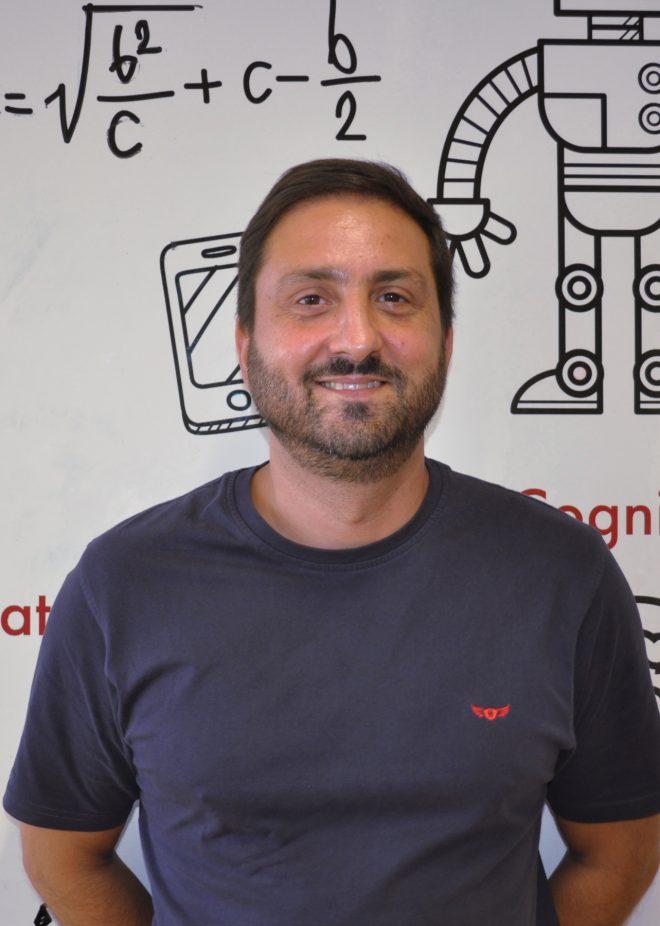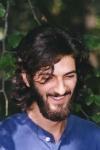| Acronym | MIRROR |
|---|---|
| Name | Mirror Neurons for Recognition |
| Funding Reference | EU-FP5-FET-2000-28159 |
| Dates | 2001|2004 |
| Summary | The goals of MIRROR are: 1) to realize an artificial system that learns to communicate with humans by means of body gestures and The biological base is the existence in primates pre-motor cortex of a motor resonant system, called mirror neurons, activated both during execution of goal directed actions and during observation of similar actions performed by others. This unified representation may sub serve the learning of goal directed actions during development and the recognition of motor acts, when visually perceived. In MIRROR we investigate this ontogenetic pathway in two ways: 1) by realizing a system that learns to move AND to understand movements on the basis of the visually perceived motion and the associated motor commands and |
| Research Groups |
Computer and Robot Vision Lab (VisLab) |
| Project Partners | DIST-University of Genova (I), University of Ferrara (I), University of Uppsala (SE) |
| ISR/IST Responsible | |
| People |
[1] Manuel Lopes, José Santos-Victor, "Visual Transformations in Gesture Imitation: what you see is what you do", Proc. ICRA2003 - IEEE International Conference on Robotics and Automation, Taiwan, 2003 - PDF
[2] Manuel Lopes, Ricardo Beira, Miguel Praça, José Santos-Victor, "An anthropomorphic robot torso for imitation: design and experiments", IROS 2004 - Proc. IEEE/RSJ International Conference on Intelligent Robots and Systems, Sendai, Japan, 2004 - PDF
[3] Raquel Vassallo, José Santos-Victor, Hans-Jorg Schneebeli, "Visuomotor Maps for Robot Task Learning through Imitation", Proc. IAV 2004 - 5th IFAC/EURON Symposium on Autonomous Vehicles, Lisbon, Portugal, 2004 - PDF
[4] Manuel Lopes, José Santos-Victor, "Motor Representations for Hand Gesture Recognition and Imitation", IROS Workshop on Robot Programming by Demonstration, Las Vegas, USA, 2003 - PDF
[5] Alexandre Bernardino, José Santos-Victor, Giulio Sandini, "Model Based Attention Fixation Using Log-Polar Images", in V. Cantoni, A. Petrosino & M. Marinaro (eds.), "Visual Attention Mechanisms", Plenum Press, New York, 2002 - PDF
[6] Alexandre Bernardino, José Santos-Victor, Giulio Sandini, "Foveated Active Tracking with Redundant 2D Motion Parameters", Robotics and Autonomous Systems (Elsevier), 39(3-4), 2002 - PDF
[7] Alexandre Bernardino, José Santos-Victor, "A Binocular Stereo Algorithm for Log-polar Foveated Systems", 2nd Workshop on biological motivated Computer Vision, BMCV 2002, Tuebingen, Germany, 2002 - PDF
[8] Raquel Vassallo, José Santos-Victor, Hans-Jorg Schneebeli, "Using Motor Representations for Topological Mapping and Navigation", Proc. IROS2002 - International Conference on Intelligent Robots and Systems, Lausanne, Switzerland, 2002 - PDF
[9] Manuel Lopes, José Santos-Victor, "Visual Learning by Imitation With Motor Representations", IEEE Transactions on System Man and Cybernetics - Part B: Cybernetics, Vol. 35, No. 3, 2005 - PDF
[10] Javier Minguez, Luis Montano, José Santos-Victor, "Reactive Navigation for Non-holonomic Robots using the Ego-Kinematic Space", ICRA - IEEE International Conference on Robotics and Automation, Washington D.C., 2002 - PDF



